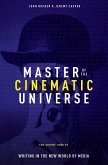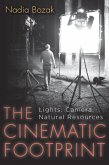The Birth of Cinema and Its Evolution as a Global Art Form Cinema is a visual art form that tells stories through the use of moving images. It was born in the early 20th century and has since become a popular art form around the world. The birth and evolution of cinema is a long and complex process. The Early Days of Cinema The first moving images were created in the 19th century, but it was not until the early 20th century that cinema began to develop into a true art form. In 1895, the Lumière brothers in France showed the first public screening of a motion picture, "The Arrival of a Train at La Ciotat Station." This film was a simple recording of a train arriving at a station, but it was a revelation to audiences. They had never seen anything like it before. In the years that followed, other filmmakers began to experiment with new techniques and ideas. In 1896, Georges Méliès released "A Trip to the Moon," a groundbreaking film that used special effects to create a fantastical journey to the moon. In 1902, Edwin S. Porter released "The Great Train Robbery," a Western film that is considered to be one of the first narrative films. The Golden Age of Cinema The 1920s and 1930s are often considered to be the Golden Age of Cinema. During this time, cinema reached a new level of sophistication and artistry. Films such as "The Birth of a Nation" (1915), "Metropolis" (1927), and "Gone with the Wind" (1939) are considered to be classics of the medium. These films were made with large budgets and used the latest technology. They featured complex stories, memorable characters, and stunning visuals. They also helped to establish cinema as a powerful form of entertainment and social commentary.







